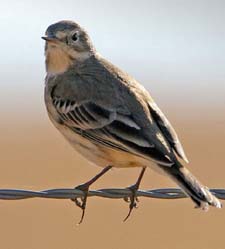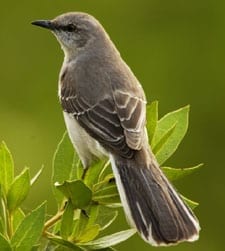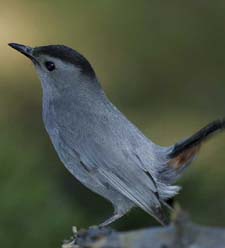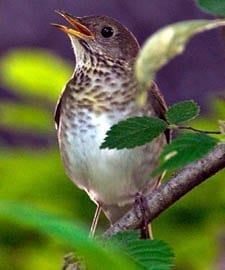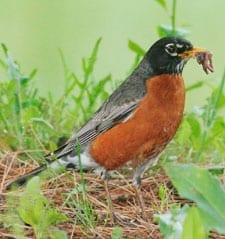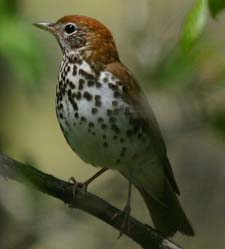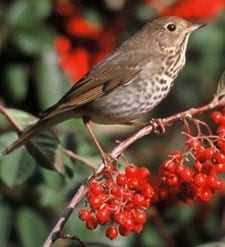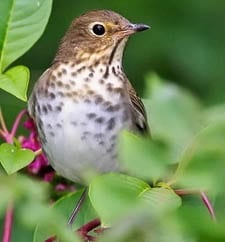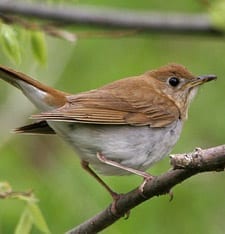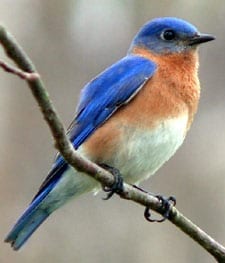Northern Mockingbird
If you’ve been hearing an endless string of 10 or 15 different birds singing outside your house, you might have a Northern Mockingbird in your yard. These slender-bodied gray birds apparently pour all their color into their personalities. They sing almost endlessly, even sometimes at night, and they flagrantly harass birds that intrude on their [...]
Gray Catbird
If you’re convinced you’ll never be able to learn bird calls, start with the Gray Catbird. Once you’ve heard its catty mew you won’t forget it. Follow the sound into thickets and vine tangles and you’ll be rewarded by a somber gray bird with a black cap and bright rusty feathers under the tail. Gray [...]
American Robin
The quintessential early bird, American Robins are common sights on lawns across North America, where you often see them tugging earthworms out of the ground. Robins are popular birds for their warm orange breast, cheery song, and early appearance at the end of winter. Though they’re familiar town and city birds, American Robins are at [...]
Wood Thrush
The Wood Thrush's loud, flute-clear ee-oh-lay song rings through the deciduous forests of the eastern U.S. in summer. This reclusive bird's cinnamon brown upperparts are good camouflage as it scrabbles for leaf-litter invertebrates deep in the forest, though it pops upright frequently to peer about, revealing a boldly spotted white breast. Though still numerous, its [...]
Hermit Thrush
An unassuming bird with a lovely, melancholy song, the Hermit Thrush lurks in the understories of far northern forests in summer and is a frequent winter companion across much of the country. It forages on the forest floor by rummaging through leaf litter or seizing insects with its bill. The Hermit Thrush has a rich [...]
Swainson’s Thrush
More likely to be heard than seen, Swainson’s Thrushes enliven summer mornings and evenings with their upward-spiraling, flutelike songs. During fall and spring migration, their soft, bell-like overhead “peeps” may be mistaken for the calls of frogs. These largely arboreal foragers pluck berries, glean bugs from leaves, or perch on branches and stumps. They also [...]
Veery
This small forest thrush gets its name from the cascade of “veer” notes that make up its ethereal, reedy song—a common sound at dusk and dawn in summer in the damp northern woods. Most Veeries are a warm cinnamon brown above, with delicate spots on the throat; though far northwestern and northeastern populations are darker [...]
Eastern Bluebird
Most of the country drives during an eastern North American summer will turn up a few Eastern Bluebirds sitting on telephone wires or perched atop a nest box, calling out in a short, wavering voice or abruptly dropping to the ground after an insect. Marvelous birds to capture in your binoculars, male Eastern Bluebirds are [...]

